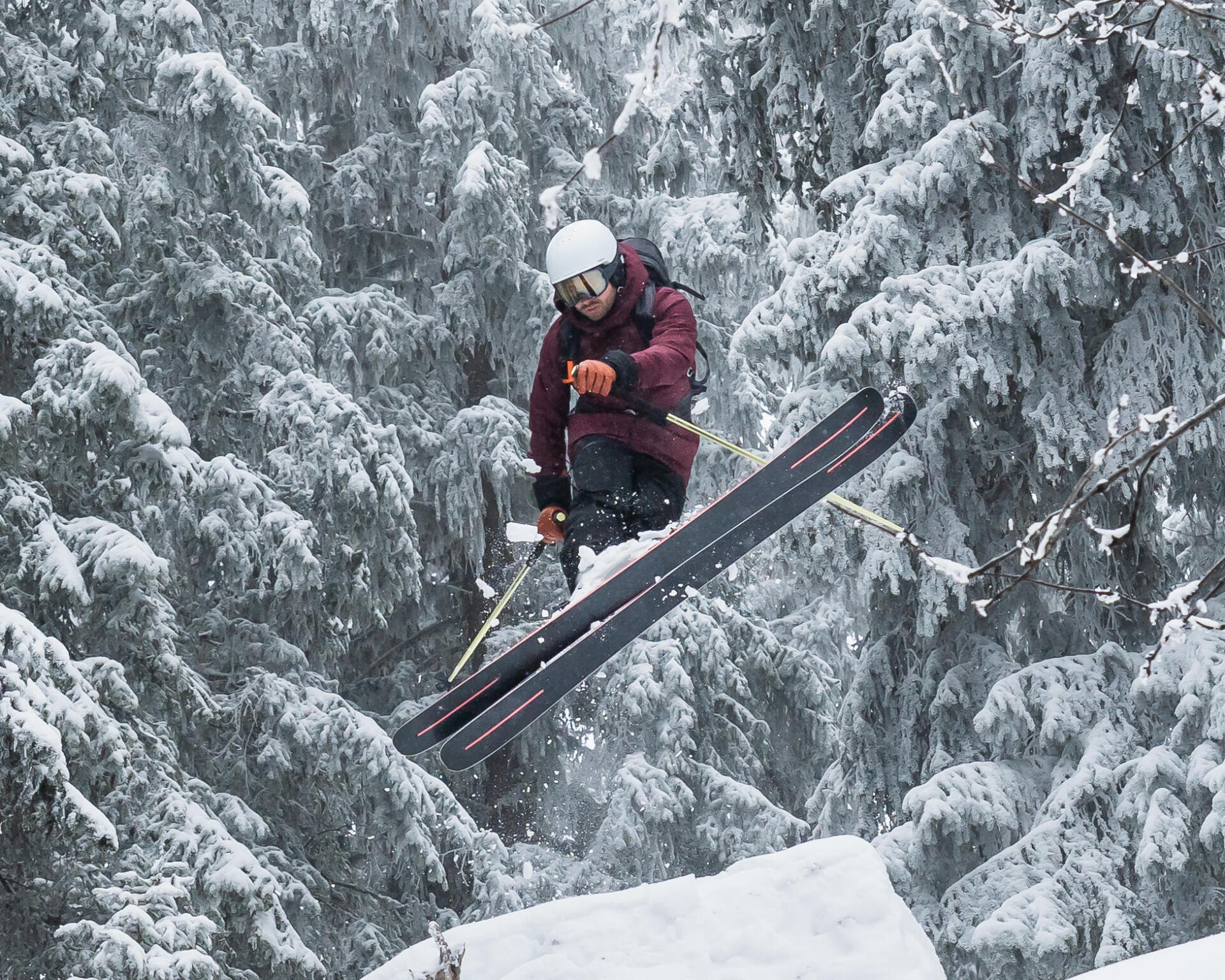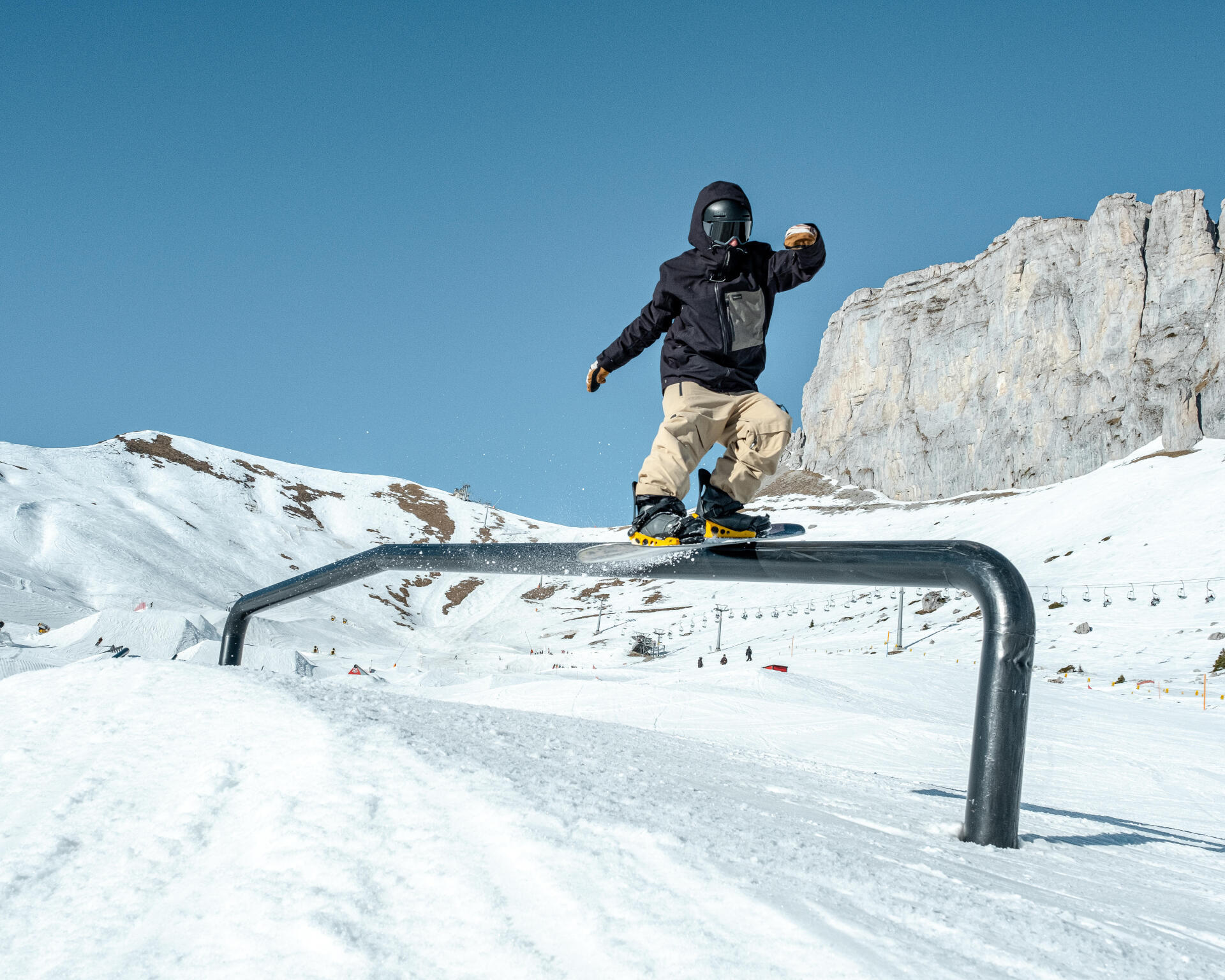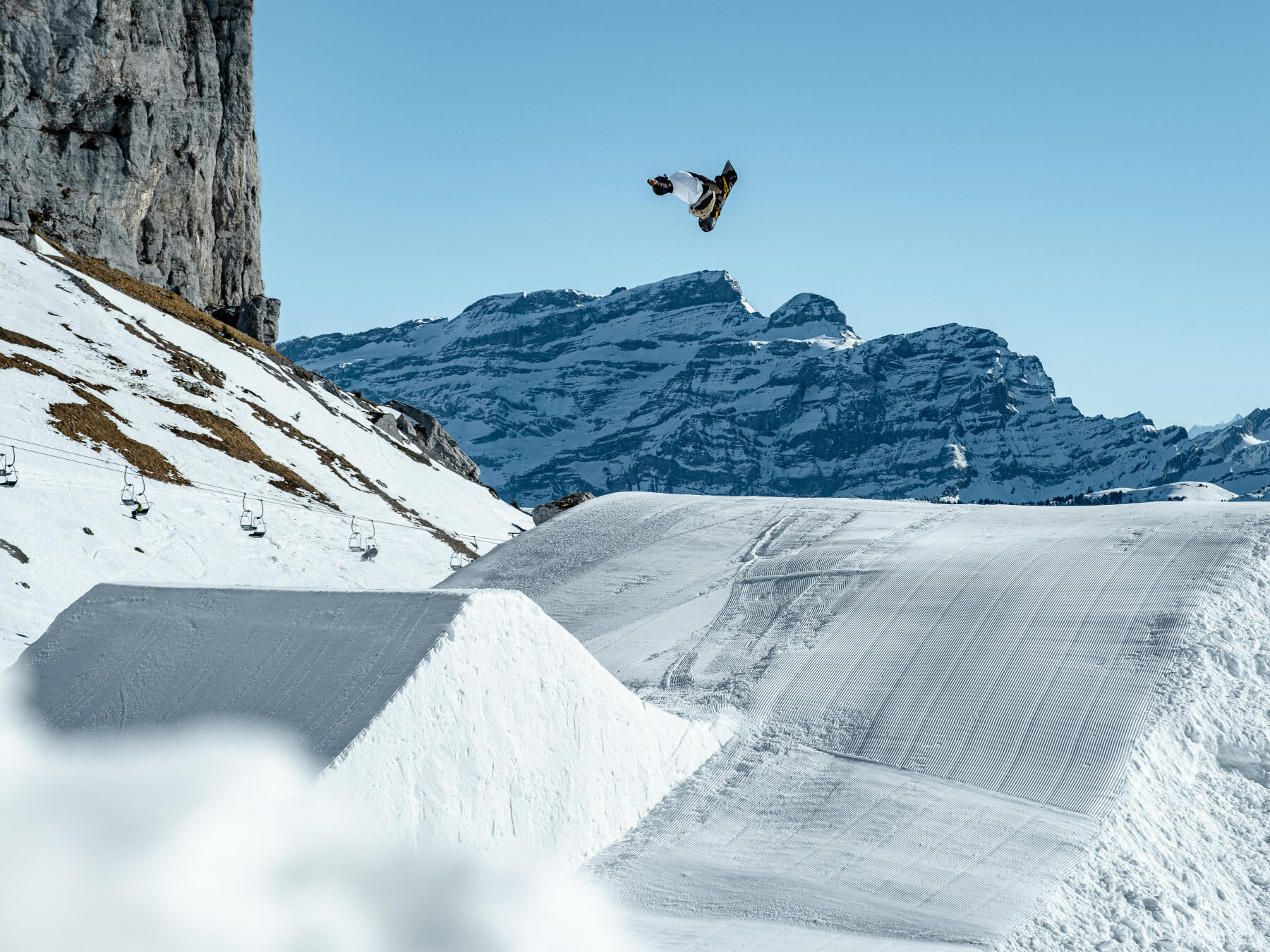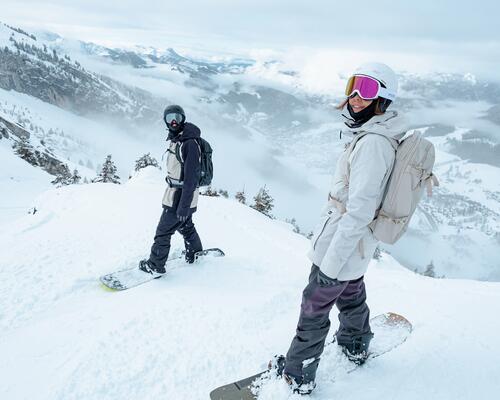Before starting freestyle, you need to be a good skier/snowboarder, able to ride down black runs! The following are some of the steps involved in learning to freestyle:
1. Switch Riding
To begin with, switch riding allows you to gain confidence and get used to sliding backwards and forwards, which is essential for freestyle riding. The body position should be slightly shifted to prevent the body from turning too much while looking over the shoulder.
2. Increase the speed
Gradually, you should increase your speed and go down more and more complicated slopes to master the switch better and better. Once this step is completed, the apprentice freestyler can attempt the infamous 180: on flat ground and at low speed.
3. Start in the snowpark
Once you have mastered the switch and the 180, freestyle skiers and snowboarders can practice in the snowpark: the course is made up of modules of different levels of difficulty. Each participant chooses the module corresponding to his or her level, using the colour code to mark out the terrain.
Snowparks are generally segmented into several zones (3 to 6 depending on the resort).
First of all, you will have to learn to master straight jumps, simple and without figures.
After the obligatory passage through the simple jumps, the budding freestylers will be able to start the more affordable tricks: grabs, flips or spins.
With hard training, rotations, flips, slides and other more spectacular acrobatics will soon follow!












